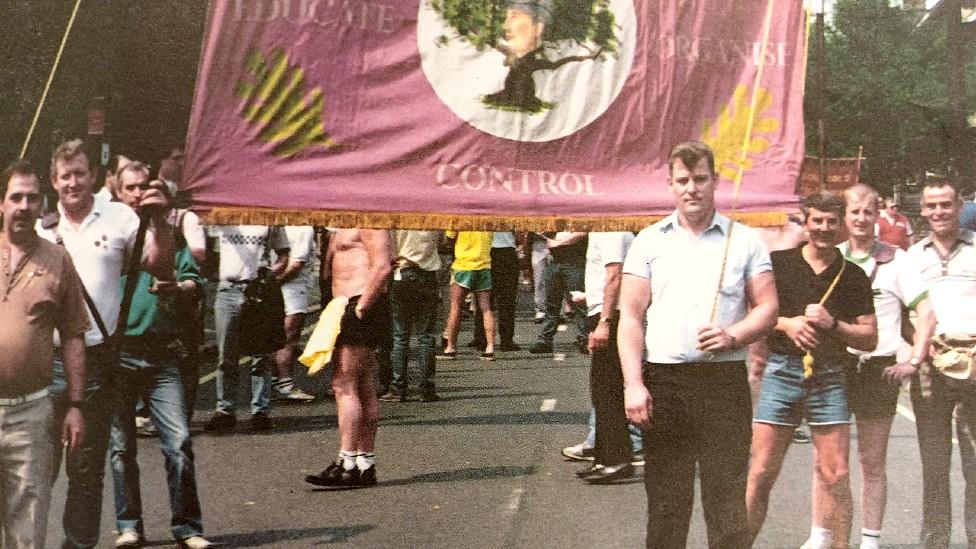National Coal Mining Museum hosts miners' memories of 1980s strike
- Published
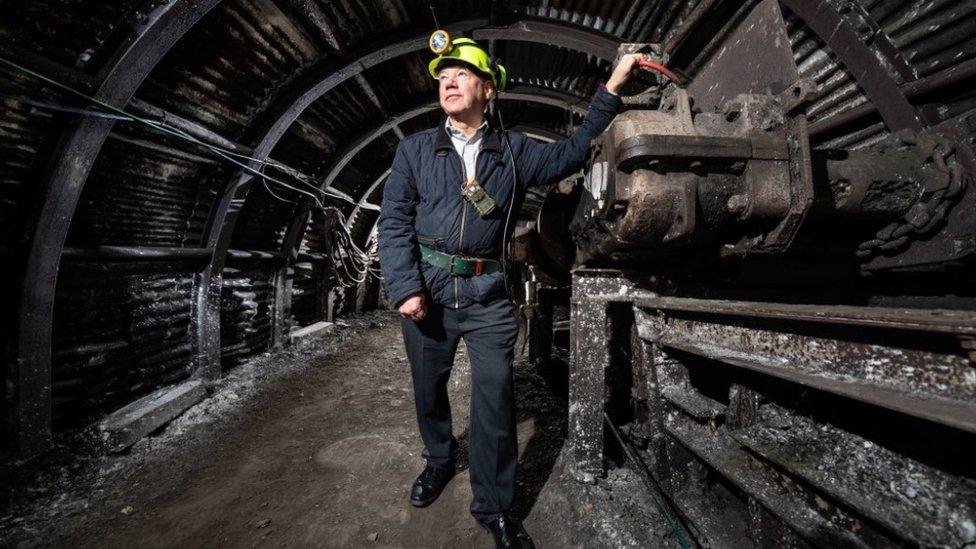
Shaun McLoughlin, mine director at the museum, said the strike should "never be forgotten"
Mineworkers' "heartbreaking" memories are being shared in an exhibition to mark 40 years since the nation's most bitter industrial dispute.
Thousands of workers went on strike in March 1984 in an ultimately doomed attempt to stop pit closures.
Testimonies include how one miner had to eat their pet rabbit because they had "nothing else to put on the table".
The National Coal Mining Museum exhibition includes memories of miners branded scabs for returning to work.
Lynn Dunning, chief executive officer at the museum in Wakefield, said the aim was to make sure the perspectives of all those involved were represented.
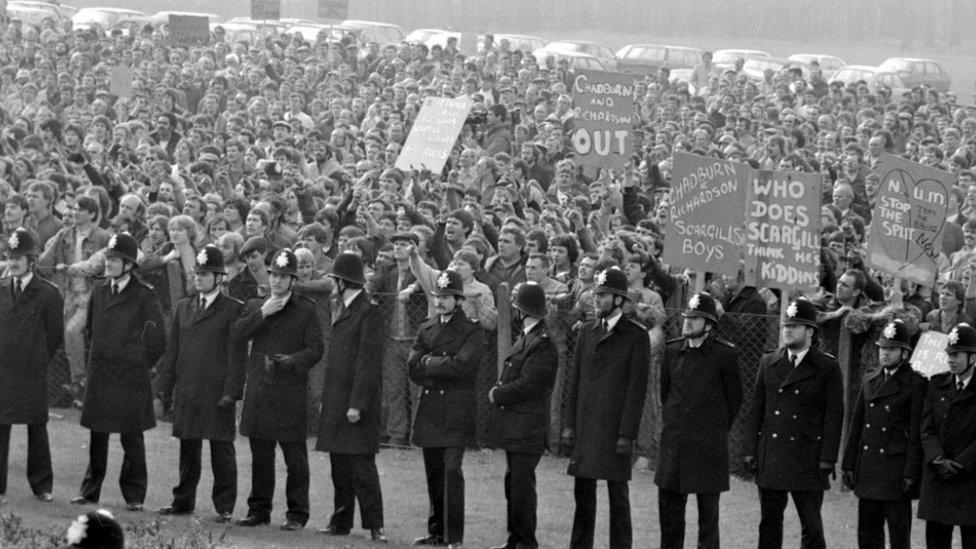
In Nottinghamshire, workers were split over whether to join the strikes
The strike started after the National Coal Board (NCB) announced in March 1984 that 20 pits would close with the loss of 20,000 jobs.
It lasted a year and was mired in conflict especially when the Nottinghamshire miners refused to follow colleagues in areas like Yorkshire and South Wales out on strike.
There was violence on picket lines as thousands of police officers from across the UK were ferried into the coalfields.
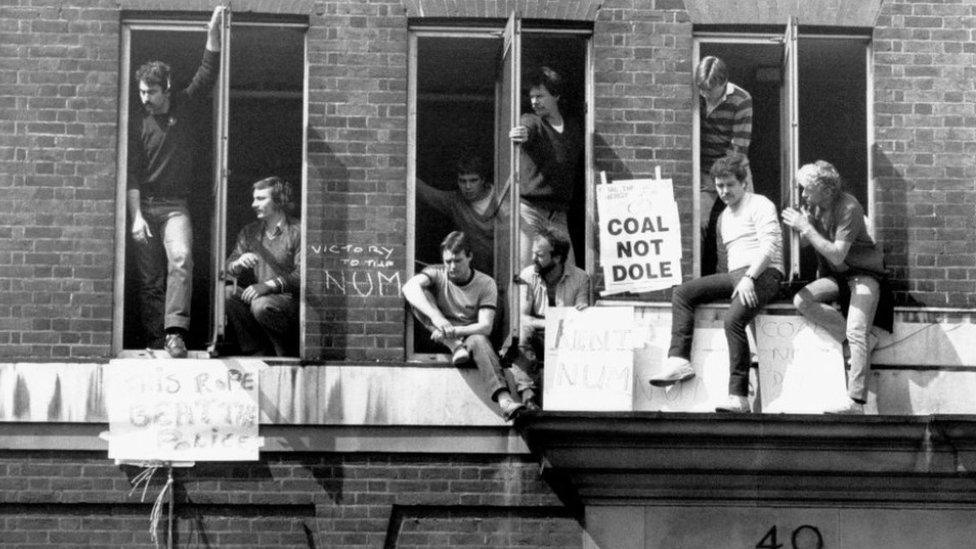
The announcement of the closure of 20 pits ignited the strikes
Exhibition curator Anne Bradley said at the core of the exhibition were the first-hand accounts from those who were there, which she has collected through a series of interviews.
She said her interviews showed many of the old enmities remained and that some contributors would only take part on condition of anonymity.
She said: "I think it's quite a well-known story, the story of striking miners on the picket lines, and the policing.
"I think those stories of those who either chose not to strike or who couldn't because of the position that they were in or the unions that they were working for, and those that made that decision to go back early, are stories that we don't hear.
"And this is a really good opportunity for us to diversify our collections, collect those stories and those voices while we still have the chance."
Ms Dunning said the strike was still a "raw and emotional" topic for many and its impact could still be felt.
"We're all familiar with the stories of people struggling to put food on the table, to pay their mortgages, etc.
"Some people did feel the pressure, as the strike went on, to go back to work early" she said.
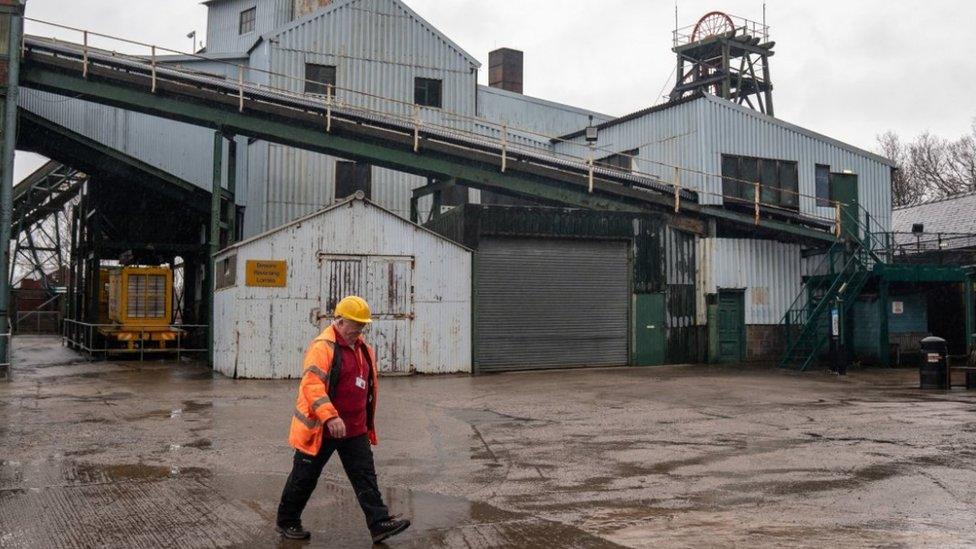
The exhibition at the National Coal Mining Museum aims to reflect what was happening in all the different coalfields during the dispute
"It's quite shocking, even today, after 40 years, to hear about somebody eating their pet rabbit because they had nothing else to put on the table.
"Those are stories that we all need to hear and experience."
Former miner Shaun McLoughlin, who now works as the mine director at the museum, said he was left thousands of pounds in debt as a result of the strikes and described it as a "brutal time".
"I've known people who ended up splitting up with wives and partners during the strike because partners could take any more, because it was that hard."
The exhibition, which is called 84/85 - The Longest Year, opens on 6 March.

Follow BBC Yorkshire on Facebook, external, X (formerly Twitter), external and Instagram, external. Send your story ideas to yorkslincs.news@bbc.co.uk, external.
Related topics
- Published25 February 2024
